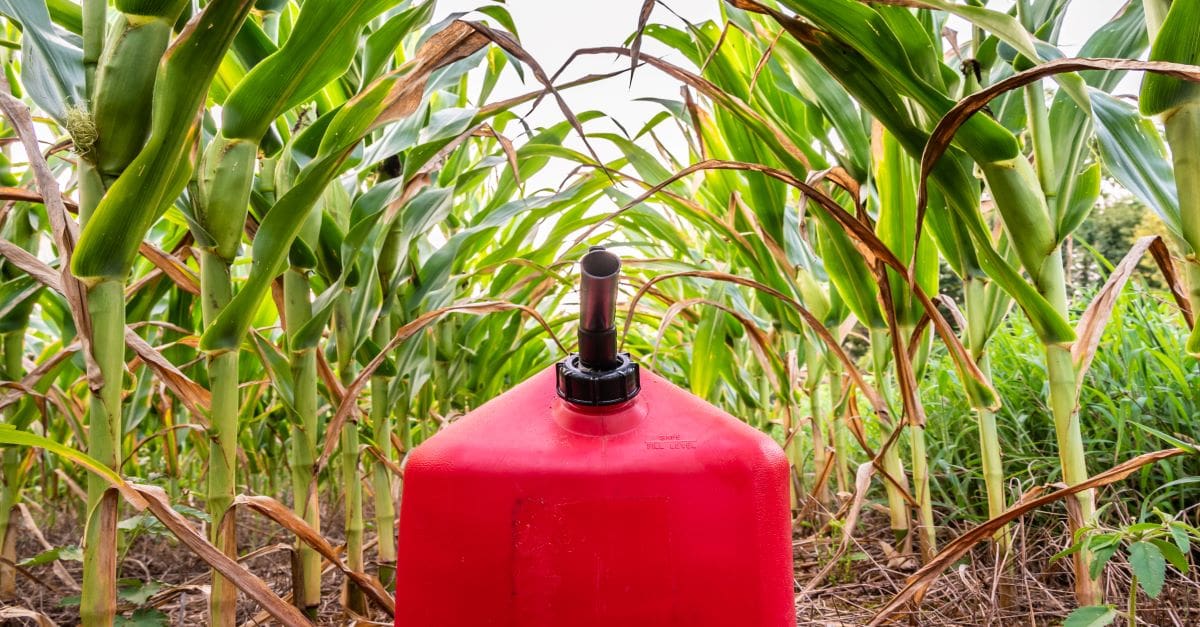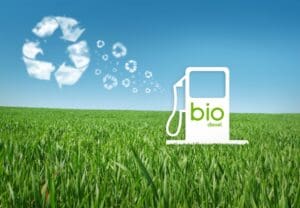As discussed in a previous LabLynx blog, “Automation in Farming Can Forever Change the Agriculture Industry,”1 demand for food production may need to increase by as much as 70 percent to feed the world’s estimated 9.7 billion people by 2050. While feeding the world is an obvious priority, many also believe there is an equally important need to reduce the world’s carbon footprint and combat climate change, and they see biofuels as an answer to environmental issues.
The US is already a world leader in biofuels development and use, along with Brazil, France, Sweden, and Germany. Biofuels are any fuel that is derived from plant or algae material, or animal waste. Biofuels are considered renewable energy sources since they can be replenished easily. This is contrary to fossil fuels such as coal, petroleum, and natural gas, which are made from decomposing plants and animals found deep within the earth. Fossil fuels require a great deal of energy to extract and, as a natural resource, they are limited.
Types of biofuels
The original, natural example of biofuels is wood, which when burned produces heat. That heat can not only create a cozy campsite or cook food on a stove; at one time, a wood fire was the sole source of heat for an entire house. Wood can also be used to run generators in power plants to produce electricity.
Biofuels can also be liquids, such as ethanol and biodiesel. Ethanol is made by fermenting starch or sugar cane, or corn grain in the case of US production. Ethanol is what is blended with gasoline to improve octane, making the gasoline burn cleaner and emit fewer pollutants. Biodiesel is made from oily plants like soybean or palm, or even waste vegetable oil from restaurants. As with ethanol, biodiesel can be blended with petroleum diesel to fuel larger vehicles like trucks, ships, and airplanes.
Trees, sugar cane, corn, soybeans, and palms can be continuously planted to replenish the supply, making them a renewable energy source. However, if biofuels are to completely replace traditional fossil fuels, more of these plant products will need to be grown. This fact ties into the challenge with food crop production mentioned earlier. Sacrificing farming fields needed for food production to dedicate more space for growing plants for bioenergy production may not be the most efficient use of the already limited amount of fertile land.
Biofuels research discoveries that eliminate the challenge to food crop production
The challenge of balancing food crops with the environmental need to lower carbon emissions has pushed biofuels research teams to experiment with new ideas. Researchers across the globe are developing and testing new techniques to use waste materials and marginal land to create biofuels that can power cities, replace traditional petroleum diesel, and fuel the world’s largest jet planes. Below are a few examples of new biofuels research.
Washington State University: Converting sewage waste to biogas
A Washington State University (WSU) research team, funded by the US Department of Energy, has found a promising method to convert sewage from wastewater treatment facilities to usable biogas.
Wastewater treatment plants use large amounts of energy to clean up municipal wastewater. The leftover sewer sludge is not a marketable product, and while many facilities use an anaerobic digestion process to reduce the waste, the remaining biosolids end up in landfills. The WSU team found that by adding oxygen-containing high-pressure steam to the process, they were able to convert more than 85 percent of the organic sludge to biogas, compared to the traditional method which yielded less than a 50 percent conversion rate.2
This discovery is not very expensive or technologically advanced, allowing even the smallest communities to use this method for reducing waste and creating energy. Larger plants may find the increased biogas can not only power their own electricity needs, but they may also have enough to add to the natural gas grid, further reducing the need for fossil fuels.
Aston University: Leftover coffee grounds become biodiesel
A team at Aston University in Birmingham, UK, supported by the Global Challenges Research Fund, discovered that algae grown on leftover coffee grounds can be processed into fuel.
It is estimated that two billion cups of coffee are consumed every day worldwide, with 98 million cups of coffee consumed in the UK alone.3 The spent coffee grounds are considered general waste and end up in landfills. However, the Aston team discovered that microalgal cells can not only grow on the leftover coffee without needing external nutrients, but also that when exposing the algae to light for 20 hours a day, high-quality biodiesel is created.4
Utilizing this new feedstock of biodiesel would decrease the need to grow more oil-based plants like palm trees.
Mercurius Biorefining: Australian sugar cane waste could be next aviation fuel
Karl Seck, CEO of Mercurius Biorefining in Washington State, is looking outside the US for acceptable feedstock in the search for biofuels to power the aviation industry.
The US produces a lot of corn stover, which consists of the leftover leaves and stalks from a corn harvest. While this stover can be processed into sustainable aviation fuels, it can require a lot of expensive fuel in the gathering process, in turn defeating the purpose of trying to make a low-carbon fuel. Therefore, Seck and his company’s research team have been working in Queensland, Australia sampling waste sugar cane from a local refinery.
The refinery in Mackay, Australia produces large mounds of waste sugar cane, eliminating the need to gather it from the field. Mercurius has established a plant next to the refinery, using a new liquid phase catalytic method to convert the waste to biofuel with lower carbon dioxide emissions than the traditional biochemical or thermochemical processes.5
While the research has just begun, the results are positive. The biofuel created from the sugar cane waste has already proven suitable to power a diesel truck.
Michigan State University: Growing switchgrass on marginal land
A research team at Michigan State University’s Department of Earth and Environmental Sciences—supported by the Great Lakes Bioenergy Research Center, the US Department of Energy, and the US Department of Agriculture’s National Institute of Food and Agriculture—has published research showing that switchgrass can be grown on marginal land, a type of land that has no agricultural value due to poor soil or other undesirable characteristics.
Switchgrass is a warm-season perennial grass native to North America. It has traditionally been used for soil conservation or as ornamental grass, but more recently it has been found to be an excellent biomass crop for ethanol and butanol. Most farmers have some acreage of marginal land where it is cost-prohibitive to plant food crops due to the heavy dose of fertilizers needed to yield a successful harvest.
The discovery that switchgrass can be grown in fields lacking the nitrogen needed for food crops not only provides a land resource for biofuels that do not compete with food production, but also provides farmers with a way to profit from otherwise useless land.6
In closing
While the world is far from replacing all fossil fuels with biofuels, finding new ways to power our cities, operate our factories, and fuel our means of transportation will help reduce the Earth’s carbon footprint. Environmental research teams across the globe are making discoveries in renewable energy sources using waste products, which means that the world doesn’t have to decide between protecting the environment and feeding the population.
LabLynx supports all the environmental laboratories working on biofuels research. Our LabLynx ELab LIMS software solutions can be found assisting many such labs, from wastewater facilities to departments of agriculture.
References
1 https://www.lablynx.com/news-events/automation-in-farming-can-forever-change-the-agriculture-industry/
2 https://www.sciencedirect.com/science/article/abs/pii/S0956053X22004809
3 https://britishcoffeeassociation.org/coffee-consumption/
4 https://www.sciencedirect.com/science/article/abs/pii/S1364032122008218
5 https://www.afr.com/companies/energy/why-australian-sugar-cane-could-be-the-jet-fuel-of-the-future-20221031-p5buag
6 https://www.canr.msu.edu/news/new-msu-research-shows-how-biofuel-crops-can-help-mitigate-climate-change-when-grown-on-land-of-otherwise-little-agricultural-value




